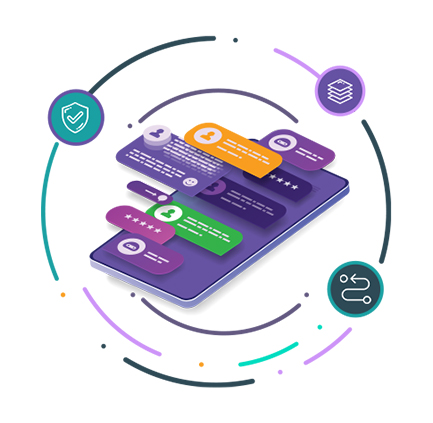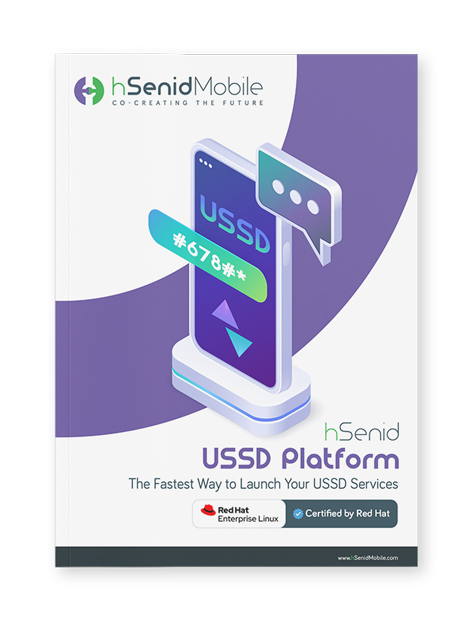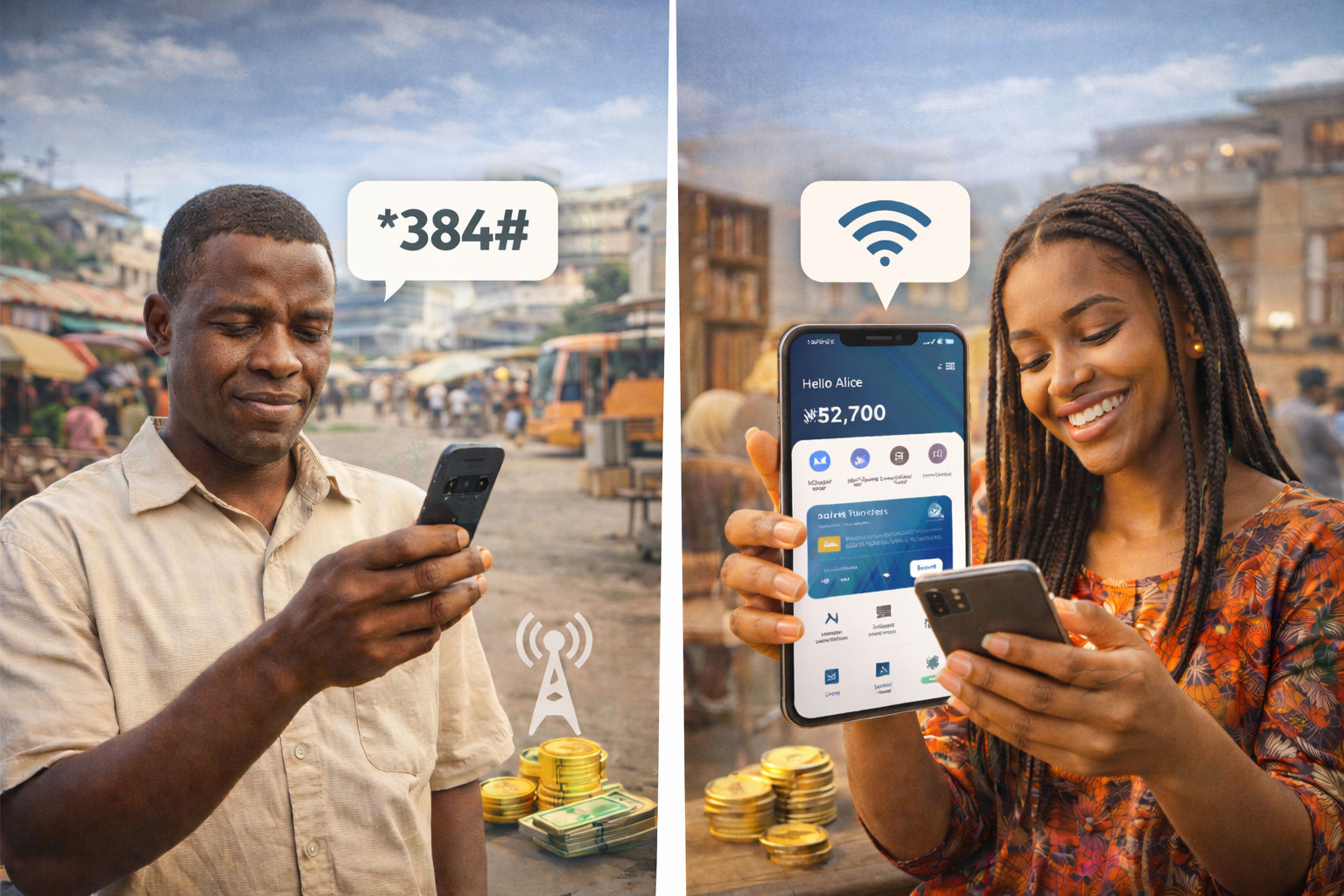In an age where 5G rollouts, AI-powered chatbots, and super apps dominate the headlines, it might surprise many that one of the most reliable technologies for African telcos in 2025 is still the USSD gateway. This decades-old channel, often seen as “basic” compared to flashy mobile apps, continues to be the backbone of financial inclusion, mobile commerce, and day-to-day communications across the continent.
But why, when Africa is one of the fastest-growing digital economies in the world, do telcos still depend so heavily on USSD? The answer lies in accessibility, affordability, and the unique socio-economic fabric of the region.
Globally, mobile internet penetration continues to rise, but the reality in many African countries is more complex. As of 2024, GSMA reports that over 600 million people in Sub-Saharan Africa remain offline, with device affordability and low digital literacy being major barriers. While smartphone adoption is growing, a large proportion of mobile subscribers still rely on feature phones.
This creates a dilemma for telcos:
Most telcos know the answer: accessibility always wins. For a mother in rural Uganda topping up airtime, a farmer in Ghana checking market prices, or a worker in Kenya sending money home, the USSD gateway remains the simplest, most universal option.
With rural populations often unable to afford data plans or smartphones, USSD ensures that mobile wallets remain accessible to the masses.
Imagine a vegetable vendor in rural Nigeria. She owns a basic feature phone and earns her income through daily sales. Every evening, she uses USSD to transfer part of her earnings into a mobile wallet, ensuring she can save securely. She pays her supplier through a quick *99# transaction and even tops up airtime for her children’s phones, all without needing mobile data.
This is not a rare story. It’s the everyday reality for millions, and it underscores why telcos cannot afford to abandon USSD gateways even as they invest in 5G and advanced digital services.
USSD remains the most used channel for mobile financial services in Africa, handling over 70% of over 70% of mobile money interactions in 2024.
Sub-Saharan Africa accounts for two-thirds of the world’s mobile money transactions, much of it powered by USSD. In Nigeria, the Central Bank has explicitly supported USSD for mobile money and banking services, citing its importance for financial inclusion. These numbers show that while digital apps are growing, the USSD gateway remains the invisible workhorse keeping Africa’s digital economy moving.
From a telco perspective, USSD gateways are not just about accessibility—they are strategic assets.
Some might argue that Africa will “leapfrog” to app-driven ecosystems. But in reality, leapfrogging doesn’t erase existing needs. It builds on them. Until smartphone penetration and mobile internet access reach near-universal levels, the USSD gateway will remain non-negotiable for telcos.
hSenid’s USSD gateway delivers the scale, intelligence, and reliability telcos need to serve Africa’s unique market realities. Here’s why it stands out:
By choosing hSenid, telcos don’t just maintain relevance—they gain the agility to innovate while ensuring no customer is left behind.
In 2025, Africa’s digital future is bright but it’s also inclusive. And inclusivity means recognizing that not every customer has a smartphone, a data plan, or digital literacy. For telcos, the USSD gateway is not just a legacy channel; it’s a bridge to opportunity, ensuring that millions remain connected to financial services, commerce, and communication.
The technology may be old, but its impact is timeless.
Ready to future-proof your telco services while keeping every customer connected? Discover how hSenid’s USSD Gateway can help you scale, secure, and innovate without leaving anyone behind.
Get Started with hSenid USSD Today
But why, when Africa is one of the fastest-growing digital economies in the world, do telcos still depend so heavily on USSD? The answer lies in accessibility, affordability, and the unique socio-economic fabric of the region.
The Industry Problem: Smartphones Alone Can’t Close the Gap
Globally, mobile internet penetration continues to rise, but the reality in many African countries is more complex. As of 2024, GSMA reports that over 600 million people in Sub-Saharan Africa remain offline, with device affordability and low digital literacy being major barriers. While smartphone adoption is growing, a large proportion of mobile subscribers still rely on feature phones.
This creates a dilemma for telcos:
- Do they innovate only for smartphone users and risk leaving behind millions of loyal subscribers?
- Or do they keep investing in channels like USSD gateways that reach nearly everyone with a mobile connection?
Most telcos know the answer: accessibility always wins. For a mother in rural Uganda topping up airtime, a farmer in Ghana checking market prices, or a worker in Kenya sending money home, the USSD gateway remains the simplest, most universal option.
Why USSD Gateways Still Matter in 2025
1. Financial Inclusion through Mobile Money
USSD is the lifeline of mobile money in Africa. Services like M-Pesa in Kenya, MTN Mobile Money in Ghana, and Airtel Money across East Africa rely on USSD gateways as their transaction backbone. In fact, mobile money transactions in Sub-Saharan Africa surpassed $1.4 trillion in value in 2023, and most of these transactions were initiated via USSD, not apps.With rural populations often unable to afford data plans or smartphones, USSD ensures that mobile wallets remain accessible to the masses.
2. Universal Reach, Zero Internet Required
Unlike mobile apps or web platforms, USSD doesn’t require internet access. It works on every GSM phone, from the simplest feature phone to the latest iPhone. This universality ensures telcos don’t exclude customers simply because of device type or connectivity gaps.3. Cost Efficiency for Telcos and Users
USSD sessions are low-cost to run and affordable for subscribers. For telcos, maintaining a USSD gateway is far more cost-efficient than constantly developing and updating mobile apps across multiple platforms. For users, it means being able to check balances, pay bills, or transfer money without worrying about data charges.4. Trust and Familiarity
For millions of Africans, dialing *123# or *144# is second nature. This habitual use has created a sense of trust. Many customers, even those who own smartphones, continue to prefer USSD for sensitive transactions like money transfers, because they see it as more secure and familiar.5. Resilience in Low-Bandwidth Environments
Even in areas with poor network coverage, USSD works reliably. In contrast, mobile apps often crash or stall without stable data connections. This resilience makes the USSD gateway indispensable for telcos serving remote or semi-urban regions.A Real-Life Scenario: The Market Vendor in 2025
Imagine a vegetable vendor in rural Nigeria. She owns a basic feature phone and earns her income through daily sales. Every evening, she uses USSD to transfer part of her earnings into a mobile wallet, ensuring she can save securely. She pays her supplier through a quick *99# transaction and even tops up airtime for her children’s phones, all without needing mobile data.
This is not a rare story. It’s the everyday reality for millions, and it underscores why telcos cannot afford to abandon USSD gateways even as they invest in 5G and advanced digital services.
Statistics That Prove the Point
USSD remains the most used channel for mobile financial services in Africa, handling over 70% of over 70% of mobile money interactions in 2024.
Sub-Saharan Africa accounts for two-thirds of the world’s mobile money transactions, much of it powered by USSD. In Nigeria, the Central Bank has explicitly supported USSD for mobile money and banking services, citing its importance for financial inclusion. These numbers show that while digital apps are growing, the USSD gateway remains the invisible workhorse keeping Africa’s digital economy moving.
The Business Value for Telcos
From a telco perspective, USSD gateways are not just about accessibility—they are strategic assets.
Revenue Generation
USSD-based services generate steady streams of transaction fees, airtime top-ups, and VAS (value-added service) revenues.Customer Retention
By keeping services accessible to low-income and rural populations, telcos prevent churn.Partnership Opportunities
Banks, fintechs, and NGOs partner with telcos through USSD integrations, expanding service portfolios.Why Abandoning USSD Is Not an Option
Some might argue that Africa will “leapfrog” to app-driven ecosystems. But in reality, leapfrogging doesn’t erase existing needs. It builds on them. Until smartphone penetration and mobile internet access reach near-universal levels, the USSD gateway will remain non-negotiable for telcos.
How hSenid USSD Helps Telcos Stay Ahead
hSenid’s USSD gateway delivers the scale, intelligence, and reliability telcos need to serve Africa’s unique market realities. Here’s why it stands out:
- Easy Service Creation & Updates: Drag-and-drop USSD Menu Designer for fast rollouts. Real-time menu modifications with no downtime or hidden costs.
- Future-Proof Architecture: Runs seamlessly across 2G, 3G, 4G, and 5G in one application server. Protects operators from costly reinvestments as networks evolve.
- Superior User Experience: Session resuming brings users back to their last active menu if disconnected. Multi-language support and “My Favorites” personalization for easier navigation. AI/ML integration suggests frequently used menus and allows keyword-based navigation instead of memorizing codes.
- Flexible Business Models: Customizable charging: per session, per request, or hybrid models. Monetization options aligned with operator strategies.
- Open & Innovative Ecosystem: REST APIs for seamless integration with fintechs, banks, and third-party apps. Enables fast rollout of services like micro-loans, insurance, and e-commerce payments.
- Proven Reliability: Over two decades of telecom innovation. Global deployments with consistently high uptime and trust.
By choosing hSenid, telcos don’t just maintain relevance—they gain the agility to innovate while ensuring no customer is left behind.
Conclusion: USSD Isn’t Going Anywhere
In 2025, Africa’s digital future is bright but it’s also inclusive. And inclusivity means recognizing that not every customer has a smartphone, a data plan, or digital literacy. For telcos, the USSD gateway is not just a legacy channel; it’s a bridge to opportunity, ensuring that millions remain connected to financial services, commerce, and communication.
The technology may be old, but its impact is timeless.
Call to Action
Ready to future-proof your telco services while keeping every customer connected? Discover how hSenid’s USSD Gateway can help you scale, secure, and innovate without leaving anyone behind.
Get Started with hSenid USSD Today








